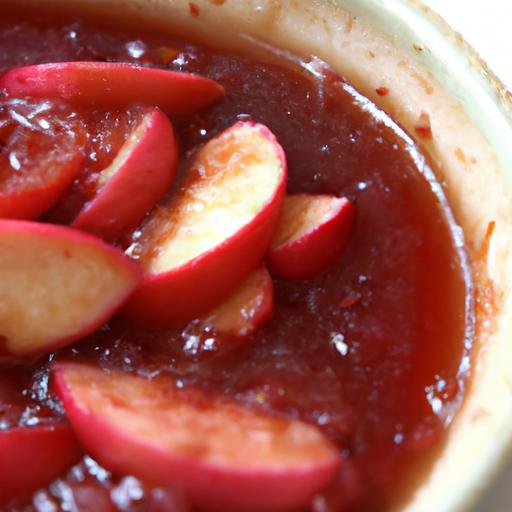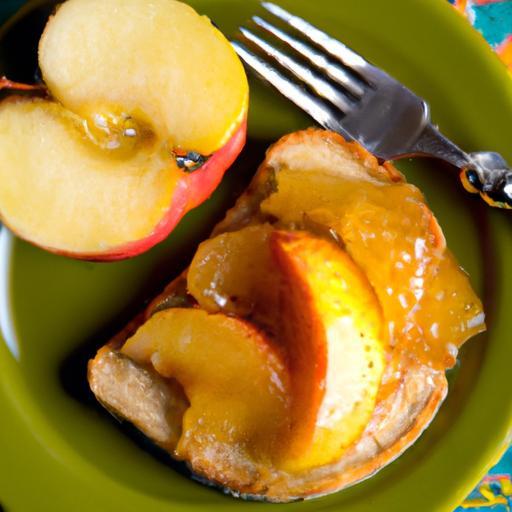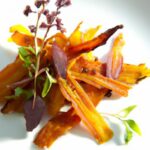There’s something magically comforting about the warm, rich aroma of fruit simmering gently on a cozy afternoon. Oven-baked fruit butter transforms humble, seasonal fruits into a luscious spread that’s both sweet and deeply satisfying-without the fuss of constant stirring or stovetop babysitting. In this article, we’ll explore the art of crafting your own fruit butter at home, revealing the simple, hands-off technique that lets the oven do the work, unlocking layers of natural sweetness and velvety texture. Whether spread on morning toast, swirled into yogurt, or spooned over desserts, homemade fruit butter is a delightful way to savor fruit in its most concentrated, flavorful form-sweet and simple, just as it should be.
Sweet & Simple: Crafting Oven-Baked Fruit Butter at Home begins with artful selection-the foundation for naturally luscious, richly flavored fruit butter that celebrates the essence of each fruit’s sweetness. Choosing the juiciest fruits guarantees a vibrancy that shines through even after slow baking, transforming humble ingredients into a velvety spread that’s both wholesome and indulgent.
Prep and Cook Time
Preparation: 15 minutes | Cooking: 4 – 5 hours (slow bake) | Total Time: Approximately 5 hours
Yield
Yields about 3 cups (6 servings) of irresistibly smooth fruit butter.
Difficulty Level
Easy – Perfect for both beginners and seasoned home cooks looking for a rewarding, hands-off technique.
Ingredients
- 6 cups of fresh, ripe fruit (apples, peaches, or berries, hulled and chopped)
- 1/2 to 3/4 cup granulated sugar (adjust based on fruit sweetness)
- 1/4 cup apple cider or freshly squeezed orange juice
- 1/2 teaspoon ground cinnamon
- 1/4 teaspoon ground nutmeg
- 1/4 teaspoon ground cloves (optional)
- 1 teaspoon pure vanilla extract
- Pinch of salt
Instructions
- Prepare Fruit: Select the juiciest fruits you can find, free from bruises or blemishes. Peel when necessary – peaches and apples work beautifully peeled for a silky finish. Chop into uniform chunks for even cooking.
- Mix Ingredients: In a large, oven-safe Dutch oven or deep baking dish, combine the fruit, sugar, apple cider or juice, cinnamon, nutmeg, cloves, and salt. Stir gently to evenly distribute spices and sweetener.
- Slow Bake: Cover the dish tightly with foil or a lid and bake at 275°F (135°C) for 3 to 5 hours. Stir every hour to prevent sticking and encourage a uniform, luscious texture. The fruit will slowly break down and concentrate, developing rich, deep flavors.
- Blend to Perfection: Once the fruit is fully softened and thickened, remove from the oven and use an immersion blender or food processor to puree until smooth and velvety. Return to oven uncovered for an additional 15-20 minutes if a thicker consistency is desired.
- Finish and Cool: Stir in the vanilla extract for a warm aroma and enhanced sweetness. Allow fruit butter to cool to room temperature before transferring to sterilized jars for storage.
Chef’s Notes
- Fruit Variations: Apples and pears provide a classic base, while stone fruits like peaches and plums offer a fragrant, summer twist. Mixing berries adds a tart dimension that balances sweetness.
- Sugar Substitutions: Use honey, maple syrup, or coconut sugar for a nuanced flavor. Adjust quantities to taste, especially with naturally sweeter fruits.
- Make-Ahead: Prepare up to a week in advance and refrigerate or freeze for longer storage.
- Consistency Tip: For chunkier texture, pulse the mixture briefly in the blender instead of fully pureeing.
- Safety: Always store fruit butter in clean, airtight containers and refrigerate. For longer preservation, use proper canning techniques. Consult the National Center for Home Food Preservation for comprehensive guidance.
Serving Suggestions
- Spread generously on warm toast or flaky biscuits for an exquisite breakfast treat.
- Swirl into Greek yogurt or oatmeal for a burst of sweet, spiced fruit flavor.
- Serve alongside sharp cheeses like aged cheddar or tangy goat cheese as an elegant appetizer.
- Use as a natural glaze on roasted meats or as a filling for pastries and crepes.
- Garnish with a fresh sprig of mint or a light dusting of cinnamon for aesthetic appeal and an extra layer of aroma.
| Nutrient | Per 1/4 cup Serving |
|---|---|
| Calories | 70 |
| Protein | 0.4 g |
| Carbohydrates | 18 g |
| Fat | 0 g |
Explore more fruit butter recipes here

Q&A
Q&A: Sweet & Simple – Crafting Oven-Baked Fruit Butter at Home
Q1: What exactly is fruit butter, and how does it differ from jam or jelly?
A1: Fruit butter is a luscious, spreadable concoction made by slow-cooking pureed fruit until it thickens into a smooth, velvety consistency. Unlike jam or jelly, which contain chunks of fruit or gelatinous textures, fruit butter is silky and concentrated, boasting a deep, caramelized flavor without the added pectin or chunks.
Q2: Why choose the oven-baked method for making fruit butter?
A2: Slow-cooking fruit butter in the oven allows for gentle, even heat that reduces the risk of burning or sticking. This hands-off approach frees you from constant stirring and simmering on the stovetop, while coaxing out richer, intensified fruit flavors through a slow caramelization process.
Q3: What types of fruit work best for oven-baked fruit butter?
A3: Apples, pears, peaches, and plums are classic stars of oven-baked fruit butter due to their natural sweetness and texture. However, don’t hesitate to experiment with berries, cherries, or even tropical fruits like mangoes-just adjust sugar and cooking time accordingly.
Q4: How do you get the perfect texture for fruit butter?
A4: Achieving that perfect, spreadable texture requires patience. After pureeing the cooked fruit, bake the puree at a low temperature (around 200°F/95°C), stirring every 30 minutes or so. As the liquid evaporates, the fruit butter thickens. Keep an eye on it and stop baking once it reaches a thick, glossy consistency that holds its shape on a spoon.
Q5: Can fruit butter be made without added sugar?
A5: Absolutely! Many fruits are naturally sweet enough to turn into delightful fruit butter without extra sugar. If your fruit is particularly tart, you can balance it with a touch of honey, maple syrup, or your preferred sweetener-always tasting as you go for perfect harmony.
Q6: How long does homemade fruit butter keep, and how should it be stored?
A6: When cooled and transferred into sterilized jars, homemade fruit butter can last up to two weeks refrigerated. For longer storage, freeze it in airtight containers or process it using proper canning techniques to extend shelf life for several months.
Q7: What are some delicious ways to enjoy oven-baked fruit butter?
A7: Use fruit butter as a spread on warm toast, swirl it into yogurt or oatmeal, dollop it on pancakes or waffles, or even serve it alongside cheese boards for a sweet contrast. It also makes a fantastic filling for pastries and sandwiches!
Q8: Any tips for first-timers making oven-baked fruit butter?
A8: Start with a simple fruit like apples, use a low oven temperature, and be patient-slow and steady wins the race here. Keep a wooden spoon handy for stirring, and trust your senses: when it smells caramelized and looks thick and glossy, you’re in butter bliss territory.
Crafting oven-baked fruit butter at home is a sweet adventure in simplicity. With just fruit, a bit of patience, and an oven, you can create a luscious spread that tastes like pure sunshine captured in a jar. Happy cooking!
Final Thoughts
As the enticing aroma of your homemade fruit butter fills the kitchen, you’ll realize that this simple, oven-baked delight is more than just a spread-it’s a labor of love, a celebration of nature’s sweetness, and a testament to the joy of crafting something truly handmade. Whether slathered on morning toast, swirled into yogurt, or gifted in charming jars, your fruit butter carries the warmth of home in every spoonful. So go ahead, gather your favorite fruits, turn on the oven, and let the magic of slow, patient cooking transform humble ingredients into a velvety treat that’s as sweet and simple as summer itself.


